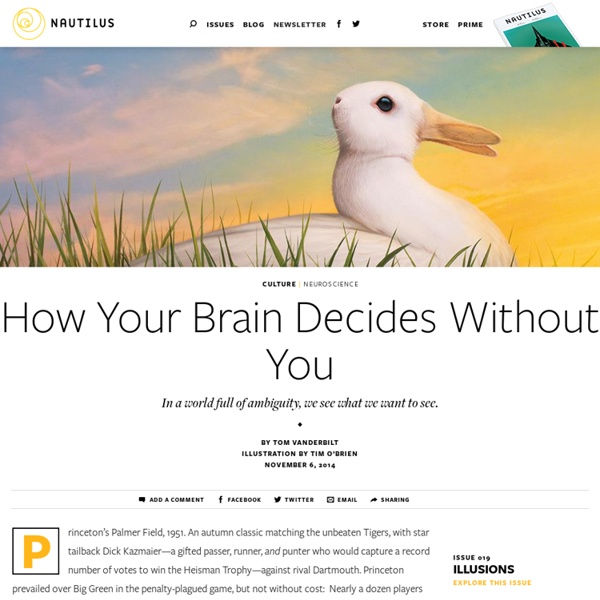How Your Brain Decides Without You - Issue 19: Illusions

Does Culture Really Evolve Like Organisms Do?
It’s become common to think about cultural change the same way we think about biological evolution—so common that it may obscure whether the comparison really works. Though there remain many questions yet to answer about biological evolution, it’s a process that’s well-understood. We know, in great detail, how variations emerge, how they’re passed on hereditarily, and how natural selection and other forces push organisms toward change. Evolution is integrated with almost everything else we know about biology. It’s been much harder to pin down the exact workings of how ideas change, which has led some scientists to wonder just how deep and literal is the connection between biological and cultural evolution. Despite the apparent flop of the meme as science, the study of cultural evolution as a whole has borne fruit. In modern times, we have similar forms of cultural evolution, though it doesn’t come out in the way we knap handaxes. Amos Zeeberg is Nautilus’ digital editor.
Why It's So Hard to Figure Out What's Killing the Bees
We first realized the bees were all disappearing back in 2006, yet despite years of government-funded research, they’re still dropping off in droves. Earlier this week the Department of Agriculture released its annual survey of managed bee colonies (those are bees that are kept by people for pollination or honey, as opposed to wild bees). According to the survey, 42.1 percent of managed colonies died between April 2014 and April 2015. In the same period the year before, 34.2 percent of colonies were lost. The bees are still disappearing, and the problem is getting worse. A big factor is the mysterious Colony Collapse Disorder (CCD), a still largely-unexplained phenomenon where entire colonies of managed bees vanish from the hive without explanation, often leaving behind a live queen and fresh honey. And they’re trying, because when it comes to our food production, bees (both wild and managed) are even more important than fertilizer. "It was in the queen’s reproductive organ.
Related:
Related:



